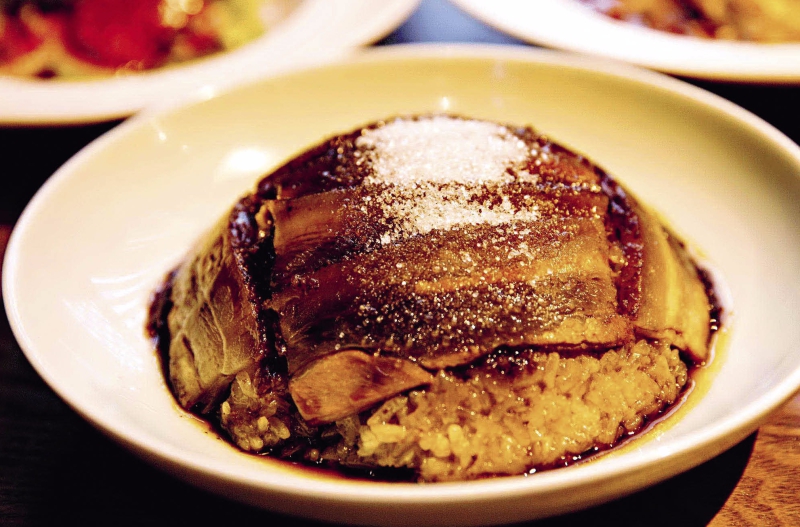
As early as in the Song Dynasty (960-1279), China already had five main sugar producing areas. The best cane sugar at that time was produced in an area adjacent to Chongqing. Planting sugar cane and cooking raw sugar has a long history with the people of Chongqing. The time-honored processing technique for edible sugar is very simple. As the color turned out to be reddish brown, it was named “brown sugar.”
Icy jelly with brown sugar juice is a popular local snack. A summer without the snack feels incomplete to local residents, while a bowl of icy jelly without brown sugar loses its culinary soul. Street hawkers usually ride on a tricycle loaded with several large iron buckets, hawking under the shade of trees in mid-summer. When customers come, the hawker opens the lid of the bucket, uses a big iron spoon to scoop the jelly-like substance out and put it into an enamel bowl, and finalizes it with a spoonful of brown sugar sauce. A diner stirs the jelly and immerses it fully in the sauce. Now, it is time to enjoy the special treat unique to summer time in Chongqing.
There is also a hint of sweetness in Chongqing’s main courses. The most representative dish featuring the taste of lychee – a blend of sweet and sour flavors, is Kung Pao Chicken. One of the favorite Chinese dishes for foreigners, the dish excels thanks to its enchanting complexity of flavor, which highlights sourness first, then sweetness, and finally pungency.
The key to the lychee-flavored dressing for Kung Pao Chicken lies in the delicate balance of different flavors. The subtle differences may only be discerned by a master with years of cooking experience. The fried chili, marinated chicken, crispy peanut, added with the lychee-flavored dressing blended from vinegar, sugar, and soy sauce, are stir-fried at a high temperature until “the sauce is thickened leaving only the red chili oil.” The dish then can be served.
At Chongqing’s wedding banquets, pork stuffed with brown sugar is a common dish in which the sweet taste dominates. It is because this flavor serves as a reminder of the happiness and auspiciousness of the occasion.
Fatty meat is a good choice for the dish. To prepare it, the pork is cleaned and the hair scraped off the skin. It is then cooked in a pot until it is medium well. Slice the cooked pork, and pile the slices in a bowl with brown sugar in between. Top the meat pile with a layer of half-cooked glutinous rice soaked with sugar sauce. When it steams at a high temperature, the brown sugar and vapor are fully diffused into the meat and glutinous rice. The translucent mouth-melting pork and its oozing fat are immersed with the sweet and sticky glutinous rice, leaving only a lingering sweetness for diners.
Glutinous rice is also a natural ingredient with a hidden sweet taste. Local people love rice cakes made from the newly harvested rice, which still retains the fresh fragrance of plants. After washing and draining, the rice is cooked in a steamer, and smashed in a stone mortar for the rice cake. Pound the cooked glutinous rice with a wooden mallet until the rice becomes soft and sticky.
Deep-frying is the most common way to prepare glutinous rice cakes. After cooking in the hot oil, the rice cake becomes slightly fluffy. By wrapping it in soybean powder and drizzling over it a spoonful of brown sugar sauce, the sweetness will be even more refreshing.